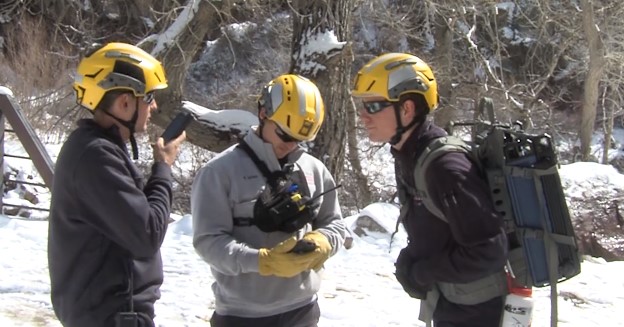U.S Department of Homeland Security (S&T)2019-03-13 11:56:54
Snapshot: S&T Testing Smart Sensor to Enhance Emergency Communications
First responders run toward danger; their jobs require it. From rushing into burning buildings to descending far underground, first responders selflessly put themselves at risk to save those in need. Often, their only connection to the outside world during these rescue missions is their colleagues at the command centers who coordinate the rescue effort. They ensure resources are effectively distributed and keep first responders safe by warning them of looming dangers. First responders and incident command rely on stable, multifaceted, modes of communication to avoid the life threatening dangers of their work and to succeed in their missions. However, with the ubiquity of IoT devices now, first responders have access to a vast, timely, and smart network of connections to the outside world.
The Department of Homeland Security (DHS) Science and Technology Directorate (S&T), in conjunction with NASA’s Jet Propulsion Laboratory (JPL), is researching approaches to bring the possibilities of IoT to emergency communications for first responders today. Expanding upon its work with the Next Generation First Responder (NGFR) program and growing out of the lessons learned from the Assistant for Understanding Data through Reasoning, Extraction and Synthesis (AUDREY) and the Personal Alert and Tracking System (PATS), S&T is testing the Wearable Alert and Monitoring System (WAMS), a multicomponent communications system. S&T is developing WAMS with an aim to not just ensure effective emergency response, but to also enhance first responders’ performance and to look out for their health and safety.
S&T Program Manager Cuong Luu explains, “WAMS is a hub that connects all stakeholders and conveys actionable information when and where it is needed. We envision WAMS to be an innovative and low-cost, low-barrier to entry, wearable device and communications system that improves job safety and increases mission success for first responders. We hope it will be a model for future interoperable emergency communications technologies.”
WAMS’s combination of wearable hardware and connected smart software makes it a “first of a kind” technology in the emergency communications space. The wearable sensor and communications hub leverages both the traditional functionalities of wearable sensors, like VitalTag, as well as the artificial intelligence capabilities found in AUDREY. Specifically, the sensor monitors and tracks the wearer and the wearer’s environment, recording and reporting vital metrics, like:
Oxygen levels in the mission space;
The presence of carbon monoxide;
Abnormal heart rhythms;
Elevated body temperatures; and,
Increased respiratory rates.
The coupling of a wearable sensor with the controlling software’s ability to run on portable devices and the use of AUDREY’s AI functionalities quickly and efficiently closes the gap between those “on the ground” with those directing the emergency response. Moreover, in anticipation of incidents that cross multiple jurisdictions, S&T is designing WAMS to be interoperable between different agencies, compatible with IT infrastructure common to most offices, and to use the FirstNet network.
“Our work with S&T on AUDREY and PATS has yielded tremendous lessons, many of which we are incorporating into the design of WAMS. This is an example of how we can leverage past and ongoing work with forward thinking to create innovative solutions,” said Edward Chow, WAMS Program Manager at NASA JPL.
Going forward, S&T and NASA JPL continue to test WAMS to ensure its functionalities work under actual field conditions and – more importantly – will be useful to first responders.
For more information contact:
Science And Technology
Washington DC
20528
United States Of America
Tel: +1 202-282-8000
